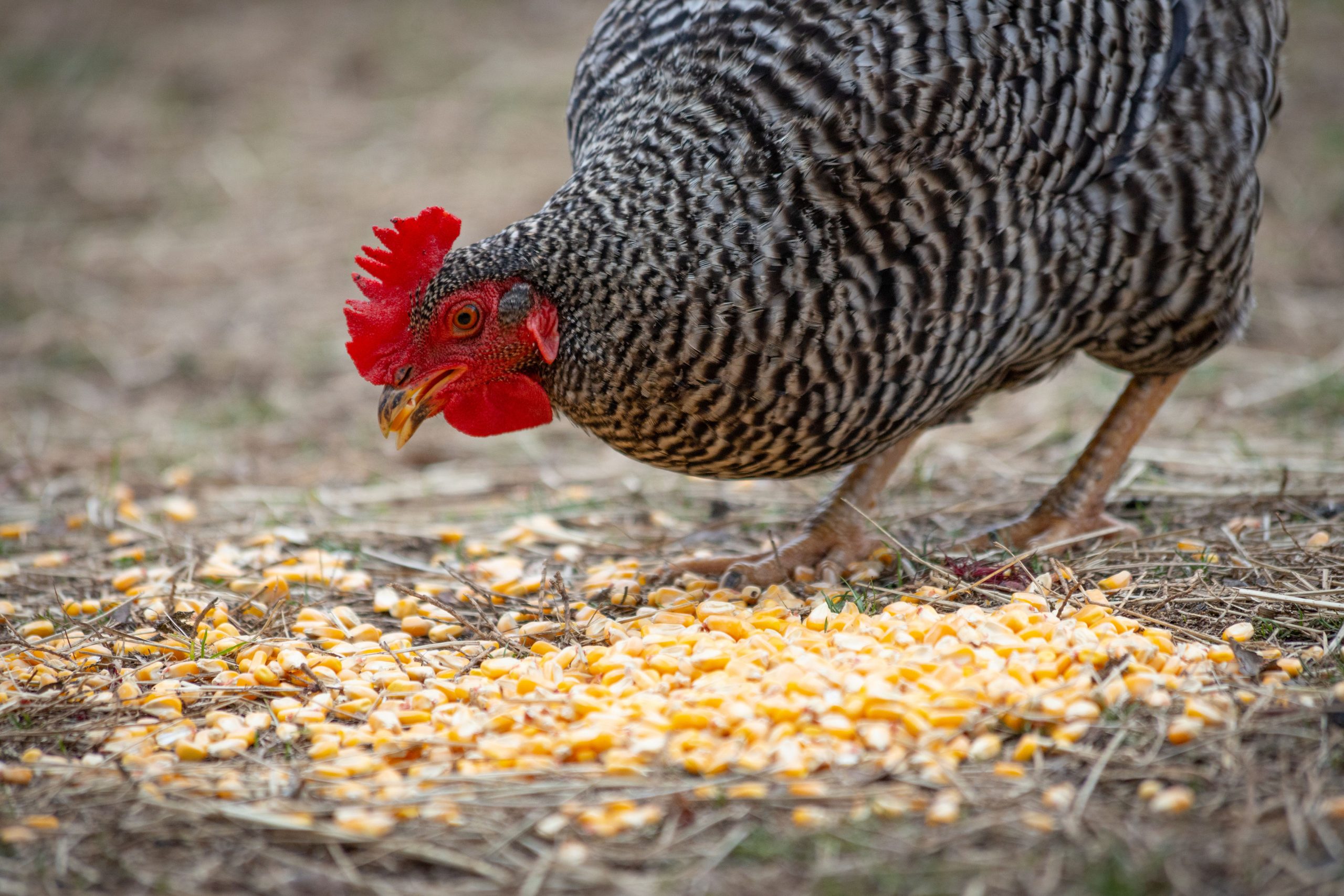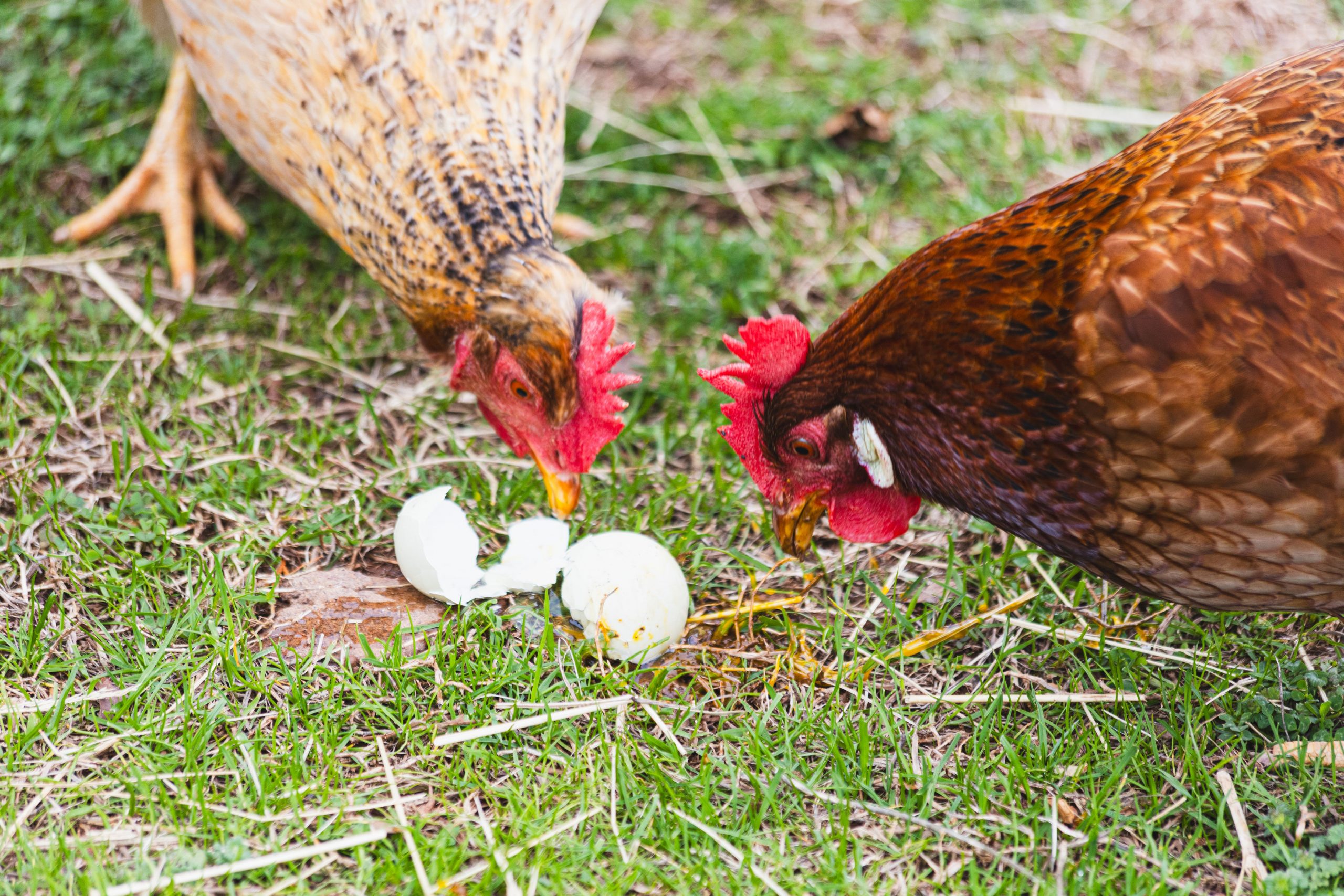Most of us feed our grown flock of birds layer pellets. Layer pellets are a great food, containing most of what an adult hen needs to survive. If you would like to treat your chickens with a ration that does more than simply let them survive, try making your own!
That being said, chickens allowed to free-range on a good sized, diverse piece of yard, do not have to be fed a special diet at all. Chickens allowed to be chickens will balance out their nutritional needs completely naturally! However, all chickens need some type of complete daily ration to thrive. Chickens are naturally omnivores. Omnivores, like us humans, need a rich and varied diet of both plant and animal matter.

To make your own chicken feed, head down to the co-op with a list of seeds and grains you’d like to include:
- 40% Layer pellets (see other protein sources as well)
- 10% Whole Corn
- 10% Sunflower Seeds
- 40% Grain Mix (Wheat, millet, barley- often available in “scratch grain mixes)
- Crushed Oyster Shells (served separately)
Protein
When it comes to protein, pelleted layer feeds are already specially formulated to handle this need. If you are on a budget, you can add a bag of pelleted feed to your DIY mix.
Most of the protein in pelleted feeds comes from soybeans. While this seems to be a good option, soy beans also contain high levels of estrogen. People consuming too much estrogen from soy products have been known to develop an increased risk of thyroid disorders, infertility, and breast cancer. That fact leads me to explore other protein options for my chickens. After all, we eat their eggs, as well as just care about them, so I’d like to have other options. Unfortunately, protein can be the most expensive component of making your own feed.
Chicken feeds usually contain somewhere between 15-18% protein. This is the optimal amount of protein for a chicken. They can survive on this ration, however, a more varied and colorful diet will often yield happier chickens.
Other protein sources:
- Insects (the free kinds)
- Dried Mealworms (costly, but a great treat for chickens)
- Bean Sprouts
- Eggs (give them leftover eggs, raw or cooked!)
- Dog or cat food ( as an additional treat, not only ration)

Whole Corn
I am a huge fan of whole corn for my flock. A while back ago, I was looking for a feed that wasn’t pelleted and I could feed to my whole herd of barnyard animals. (Chickens, ducks, and goats). Whole corn contains 7.5 % protein, and should be given at about 10% of their daily ration. Feeding corn supposedly will increase body temperature while digesting, making it a great evening treat for your hens before a winter’s night. Corn must be fed in moderation, and you do not want whole corn to be your primary feed, or your chickens will start getting too fat!
Sunflower Seeds
Sunflower seeds not only are delicious for chickens, but they contain amino acids. Amino acids help build protein, and chickens do not make this on their own as well as some other animals. Sunflower seeds, fish meal, and sesame meal all contain good amounts of amino acids.
Whole Grains
Whole grains make up to 70% of the diet of a chicken when it is free choice fed. Grains come in many different shapes and sizes and are essentially the dried seeds of grasses. The most available grains at the feed store include wheat, oats, barley, and millet. Most co-ops offer scratch grain mixes, varying in types of grains added. Our co-op has a 3 way, 9 way, and 12 way scratch grain. These are the grains chickens “scratch up” when naturally free ranging. Scratch grains are meant to be fed supplementary to pelleted layer feed. Pre-made scratch grains are an awesome addition to a DIY feed mix!
Crushed Oyster Shells
Please remember to also give your chickens access to crushed oyster shells daily, especially if you get a lot of eggs. Calcium in the seashells helps make strong eggshells! I like to leave mine out in a pan on the ground in a dry spot. The hens will take what they need as they need it.
There are many feed options out there for the chicken enthusiasts to learn and try nowadays. Get to know your local feed store and start exploring your options! Remember, chickens also benefit greatly from table scraps and lots of leafy greens. Bon Appetit!